Julia Baldini's Shoes Arrive In The Boot
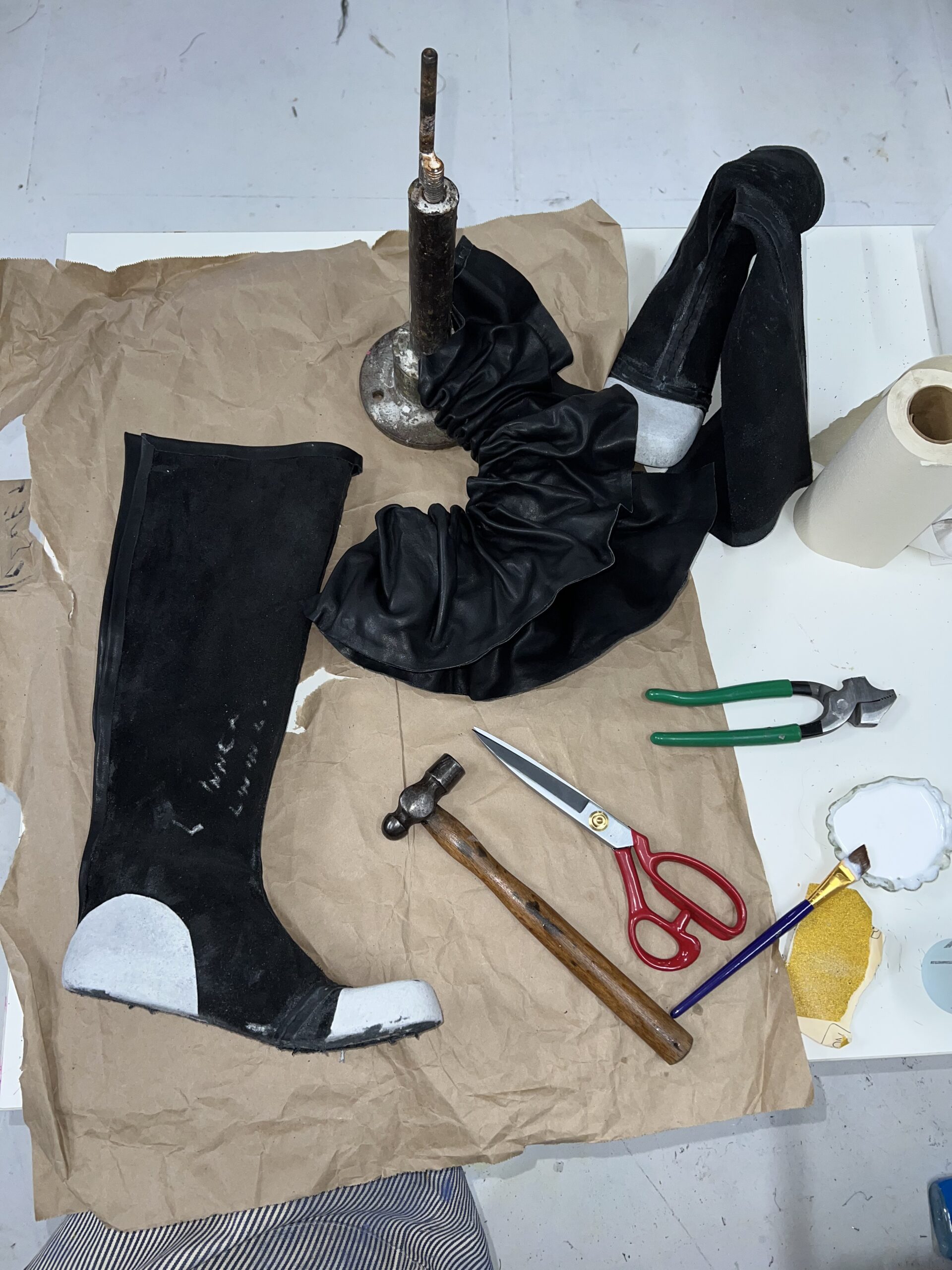
Julia Baldini’s shoes are handmade art objects that give shape to her instincts and dreams. The shoes exist in a category of their own, far beyond the realm of footwear. They have imparted their mystique across Australian Fashion Week runways and even live as curious creations in the permanent museum collections of the Powerhouse Museum and National Gallery of Australia.
Between launching her debut shoe collection under her own label and moving her life to ‘the boot’ of Italy to pursue further studies in Milan, it’s sure going to be a big year for the Sydney-born designer.
Alexia Petsinis: Why shoes? Were you initially intrigued by them as footwear or something more?
Julia Baldini: I think as a child, shoes helped me gain an understanding of how the world worked and the differences between the worlds of kids and adults. Like most kids, during the weekdays, I had to wear school shoes that were plain black leather and pretty boring. The only other time I changed shoes was basically for sport. On weekends in Australia, I was barefoot all the time. So the only exciting shoes I experienced as a kid were my mother's, and I always played dress-ups in her various pairs.
This is how I first experienced the fun and creative side of shoes that I associated with adult life. It seemed to me like kids never got fun shoes besides, maybe, a pair of party shoes for a special birthday or something, but that was about it.
AP: So exploring shoes more deeply as vessels for creativity and self-expression is what continued to fuel your sense of curiosity?
JB: As I grew up, I started working in retail and then went on to be a buyer in a vintage store. All I did was spend time examining shoes and clothes made by other people, and I think it was only natural to develop an obsession with mixing and piecing together elements in my head to create the perfect shoe. But I was never just satisfied with the fantasy; I really wanted to actually make them. I guess the first experience of realising a pair of shoes, from their origin as a dream in my head to the physical objects I held in my hands, was a catalyst for me. That's when the real compulsion to keep making other pairs kicked in. I couldn’t stop.
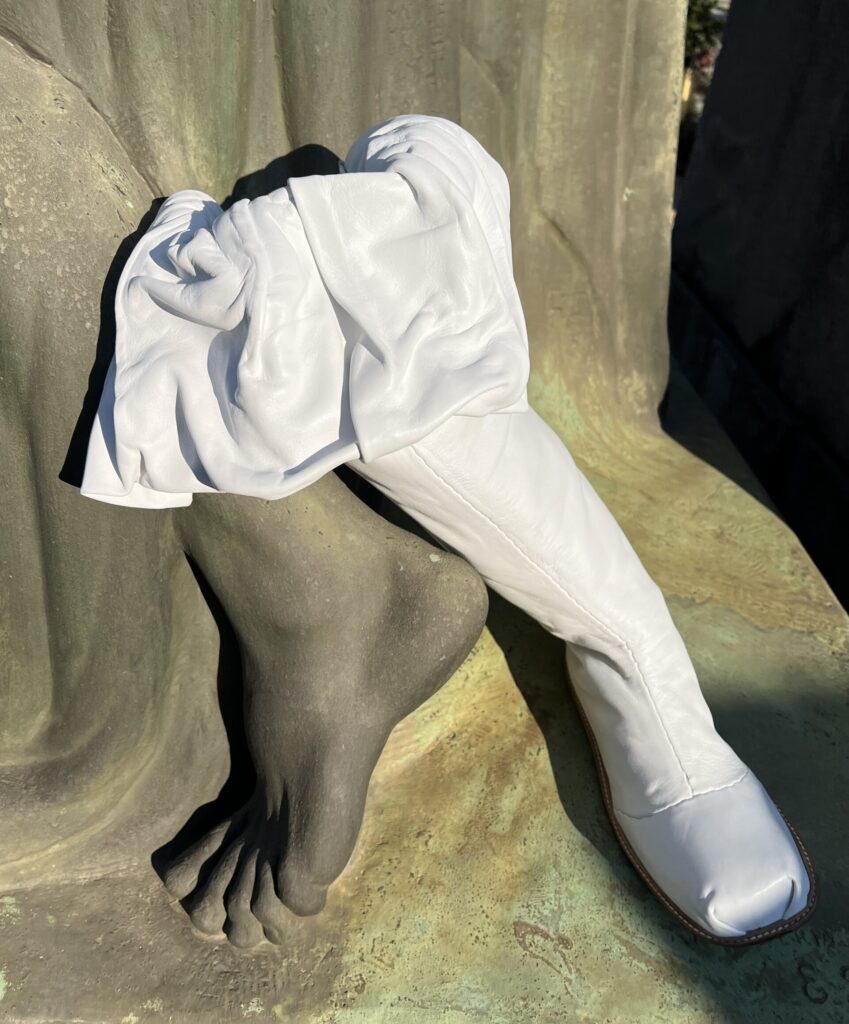
AP: Do you think the art and tradition of shoemaking are explored with enough significance in Australia, particularly when compared to other places in the world like Europe?
JB: The footwear industry in Australia is very young. I think Australia's culture around dressing and shoe-wearing is very different from what it is or traditionally has been, especially in places like Europe.
The importance of ‘getting dressed’ really didn't come into play until around the 1950s in Australia. During this time, more clothes and artisanal brands started being imported from overseas, and I think that's when more emphasis was placed on the importance of having different pairs of shoes to go with different outfits. Before this time, most people might have only had one nice pair of dress shoes that they wore to church or for special occasions. I don’t think the importance of shoes, and especially making shoes, has existed in Australia for very long.
We have a small shoe industry in Sydney, but it's predominantly made in Melbourne. Australia has shut down a lot of its former shoe-making factories, and there aren’t many places where you can go to learn shoemaking. Most shoes are manufactured offshore because it's cheaper. In Australia, there hasn’t really been a sustained investment in educating that part of the industry. It's just not important compared to the rest of the world.
AP: The shoes you create sit in a category of their own beyond simply being a pair of footwear. How would you describe or categorise your shoes from a design or artistic perspective?
JB: It’s a tricky question! I’m not really sure how to categorise them, but I definitely do see them as being more of an object. I actually see them as a talisman to wear on your feet. Sure, there are inanimate objects, but they're definitely infused with a big part of myself.
So I dream them up, I make the pattern, I cut them, and I often sew each stitch by hand. Especially with this current collection, I haven’t used a sewing machine once. I spend tens of hours with each shoe, so there’s definitely a big part of me that goes into each pair. So they definitely have their own energy. And if I make a pair of shoes for someone else—like a friend or a client—I will often write manifestations and wishes inside the soles of the shoes. You can’t see them, but they’re there in the layers of the sole.
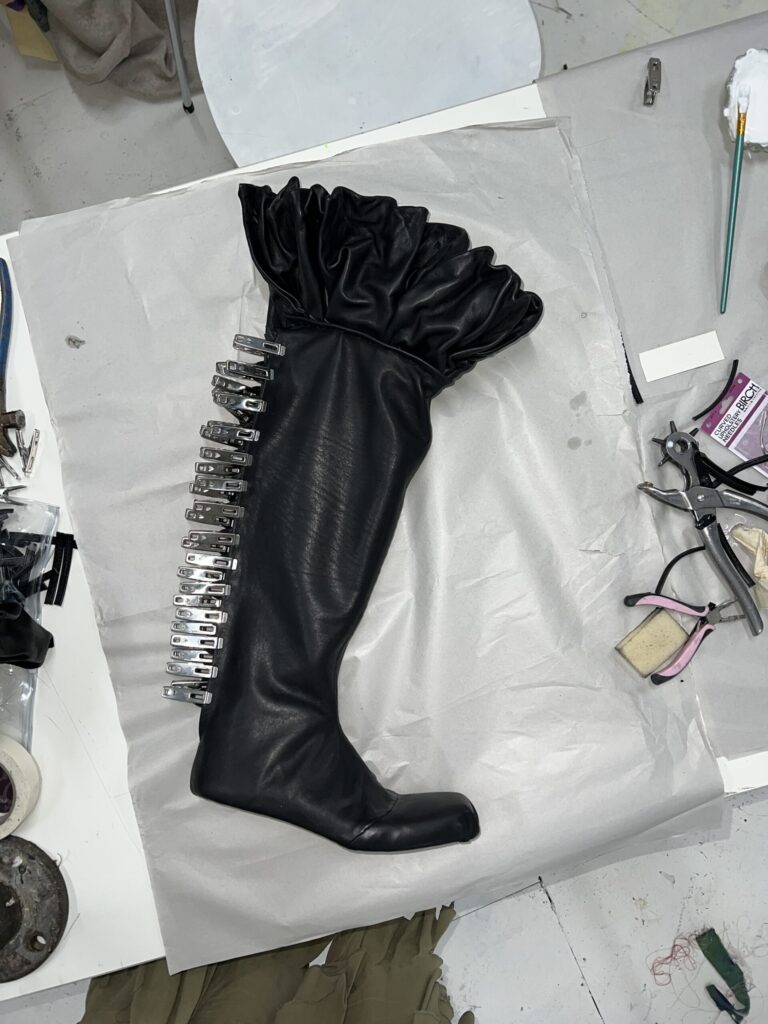
AP: Where does your design inspiration come from for your shoe creations?
JB: In my subconscious, I draw inspiration from various things, including nature. I don’t really sketch my shoes before I make them; I just sort of know in my head what form they would take, or I have an instinct about them. Or occasionally, I get an idea of what I want to do with a material I source or a piece of fabric I've had for a long time.
When I’m looking for inspiration for new shapes, colours and textures,I go to vintage markets. It’s like a compulsion of mine to go and trawl a vintage market to see what I find. It doesn’t matter what it’s for, whether clothes or objects; I simply love the hunt. The people I make shoes for also inspire me. I try to become more attuned to their personalities and create something that reflects them. I’ll think about them while I make the shoes and have good wishes for them in my mind during the process, because I want the wearer to feel lucky and to feel encompassed in something magical when they wear them.
AP: What about the people who inspire you? Artists? Designers?
JB: David Bowie for sure. I always go back to him whenever I need inspiration. I listen to Bowie and find peace again. He had countless transformations; he never stayed the same. He never felt the need to remain the same for his fans or for anyone else. He really gives me great comfort because I don’t stay the same from one year to the next; I don’t have the same outlook on things, and I’m constantly doing different things and evolving in new ways. As for designers, Kei Kagami, Miuccia Prada, and the late Dame Vivienne Westwood.
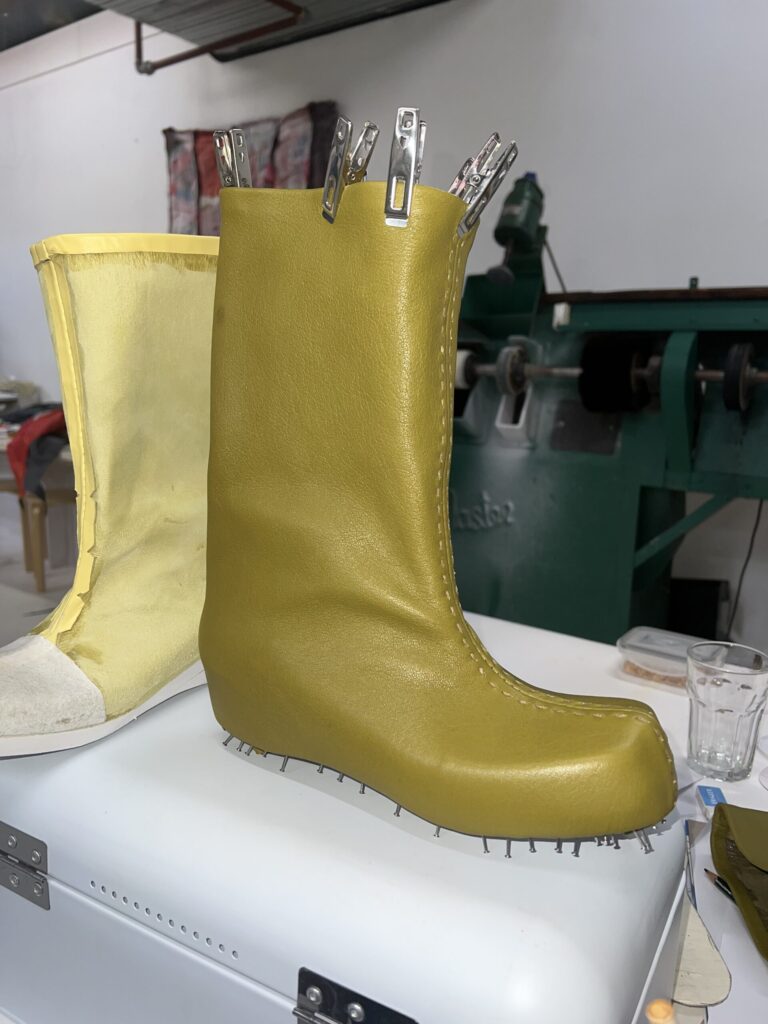
AP: You’ve been on your own wild ride through the Australian fashion industry over the last few years, too. Can you tell us a bit more about your work as a collaborator with some of the county's most esteemed fashion designers?
JB: I was lucky to meet fashion designer and artist Jordan Gogos a few years ago, and I moved into his studio and started working from there. This basically saw me go straight into creating shoes for all his major runways at Australian Fashion Week and other projects he was involved in with his brand, Iordannes Spyridon Gogos (ISG). It wasn’t actually my plan; initially I was just going to create odd pairs of shoes and boots for Jordan and start my own label, but what an amazing experience the past few years have been!
Through my connection to Jordan and his studio, I’ve had some incredible opportunities, like being able to work with Australian fashion legend Jenny Kee (who is a lifelong inspiration of mine) and also having the opportunity to design alongside Akira Isogawa (another huge idol) for Jordan’s show at the Powerhouse Museum. This was definitely beyond a dream. It’s crazy to think I’d be working with Jordan and the ISG team on our third Australian Fashion Week collection right now if I were still in Sydney!
AP: I must ask, seeing as your shoes seem to take on a life and character of their own, what’s the most challenging or labour-intensive pair you’ve ever created?
JB: Probably the most labour-intensive was one of the pairs I made for ISG’s first Powerhouse Museum show in 2022. We had a really small budget for that show, and that aside, I didn’t have access to a huge amount of shoemaking supplies because we just don’t have those kinds of suppliers in Australia. I wanted to make a huge platform, so I decided I’d do it myself.
I went to Bunnings Warehouse and bought all these slabs of wood, and I glued them all together and traced out this platform I had inside my head onto the wood, and I started cutting it with a bandsaw myself—I was completely in over my head! I remember I spent forever shaving them down with a grinder—days and days in fact. I had blisters all over my hands; they sure were intense. They are now actually part of the Powerhouse Museum’s permanent collection.
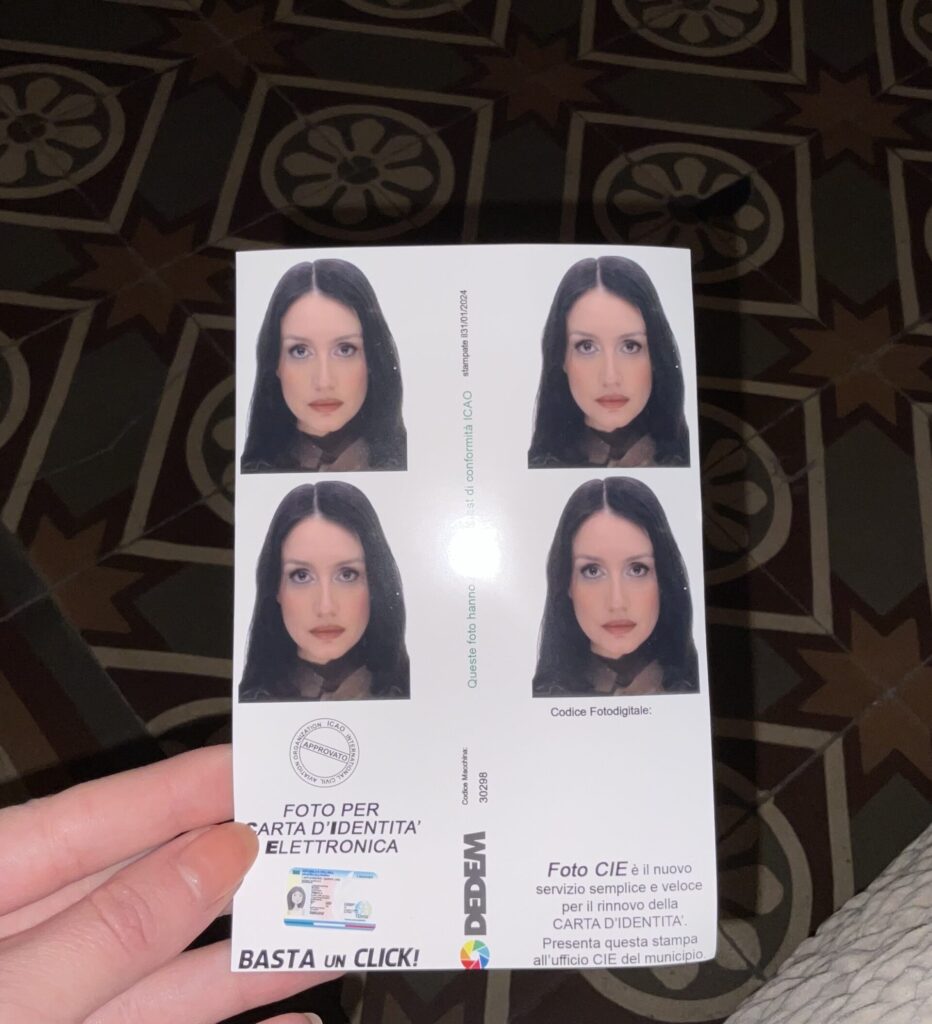
AP: You recently launched your debut shoe collection under your own name. How would you describe the essence of your brand or its philosophy?
JB: It’s difficult for me to put into words! Honestly, it’s very intuitive, and I hardly ever verbally express it. It always comes across through shape, colour and texture. It’s definitely been quite refreshing for me to work on my own brand because my aesthetic is quite different from that of my past collaborators. So I’m seeing where it goes. I think it's still evolving … I’ll probably even start to see it in a different light now that I’m over here in Milan.
So far in my career, I’ve been guessing and teaching myself a lot because I only ever did four short courses before diving into the industry. A lot of it is self-taught, even though, aesthetically, I feel like the language is there. It is beneficial when specific "branding" assets, such as my incredible brand logo that my close friend Brittany Wyper created and hand-drew in Sydney, start to play a role.
AP: Can you tell us about some key silhouettes, materials and design narratives you are exploring in your debut collection?
JB: I tried to abandon the sewing machine completely in this new collection because I wanted to feel a deeply personal connection with the shoes. I was really happy I could work with leather again. I’m a leatherworker and really passionate about beautiful, quality leather goods. So, having not worked with leather for the last few years, it was great to revisit my origins with the material. For this collection, I picked out hues and tones that had been swimming around in my head for a while, like a beautiful olive green, blood red, buttercup yellow and a stark white. I had this idea to do an all-white shoe, so there’s a white boot in the collection too.
Actually, this boot has a wire-filled ruffle at the top of it, which can extend up over the knee if the wearer wants. I wanted it to have this really curvy, ruffled opening at the top because the shape is based on an angel's trumpet flower (Brugmansia). I loved the process of using my hands to manipulate the shape of the shoe. I really didn’t use many tools to create it.
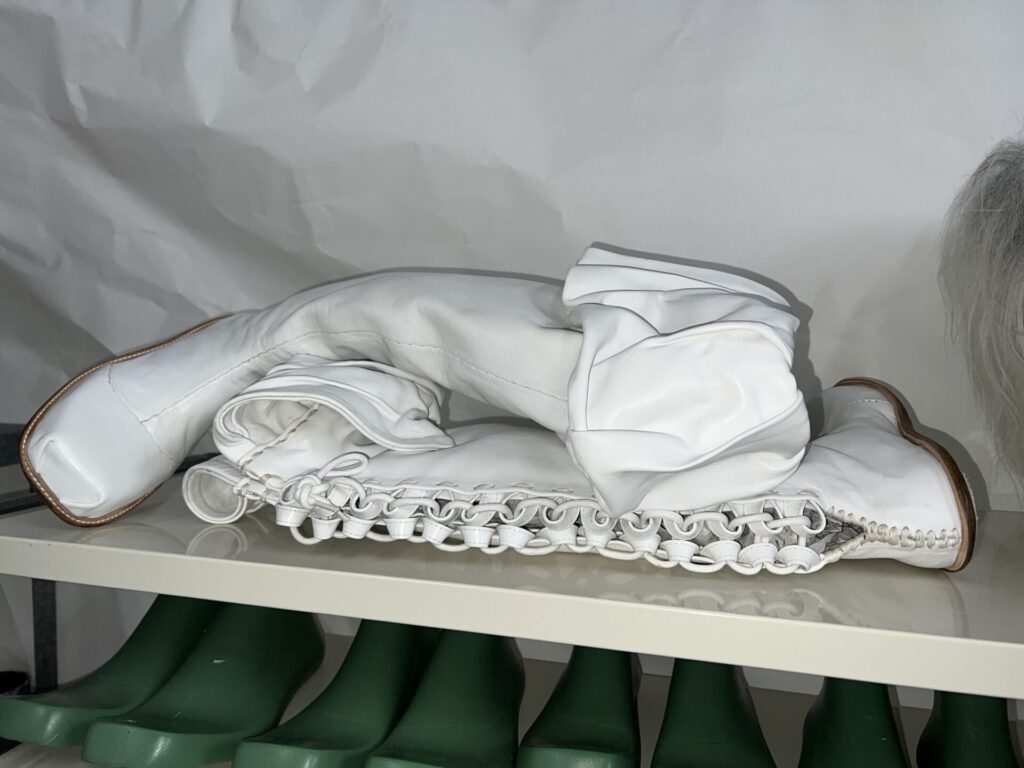
AP: You have also recently moved your life to the ‘boot’, Italy, to study a shoemaking course full time in Milan. What has been your experience in the course and in the city so far?
JB: I’ve always had the intention of studying shoemaking full-time and learning the traditional Italian way. My course is run at an institution in Milan called Arsutoria (located near City Life), and it's actually bag and shoe design. I have really only just started, and we are focusing on bag design at the moment. We’re doing a lot of digital design and 3D renders, which was actually a surprise for me, but it's pushing me to explore a new approach to design that I hadn’t considered before. Eventually we’ll start doing hands-on bag and shoemaking workshops, where we’ll actually create our own patterns in the traditional Italian way.
I’m still finding my footing in Milan itself, but I feel like it’s a very dynamic city with a diverse design community. I’ve also found some really great vintage markets here and I plan on making my way through them all!
AP: What’s your vision for your brand or yourself as a shoe designer?
JB: One thing is for sure in life: we never know what’s going to come, and it will continue to evolve in its own way. But I would like to continue developing my skill set, my own design language and my brand. I’d love to make handbags to pair with the shoes and to keep exploring and designing more vessels. I think shoes and bags are ultimately vessels.
I’d also love to explore some sampling and manufacturing possibilities here in Italy, given that a lot of the industry is based over here. But really, I love what I’m doing right now, and I’d love to keep doing that as a job.
Opera's Fugly Amazingness
By Mark Bo Chu
THE DEATH of EGO
By James Robinson
Britt Murphy and Jaime Butel Capture Australia's Small Towns
By To Be Team
NOIR: Hyperbolised Forms
By Billy De Luca
Balenciaga Leads the Metaverse!
By Annabel Blue
An Ode to Human Liberty and Independence for Comme des Garçons FW22
By Tara Robinson